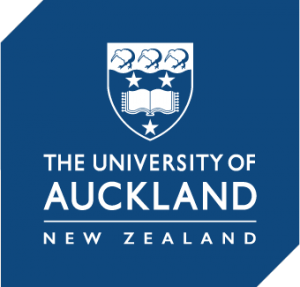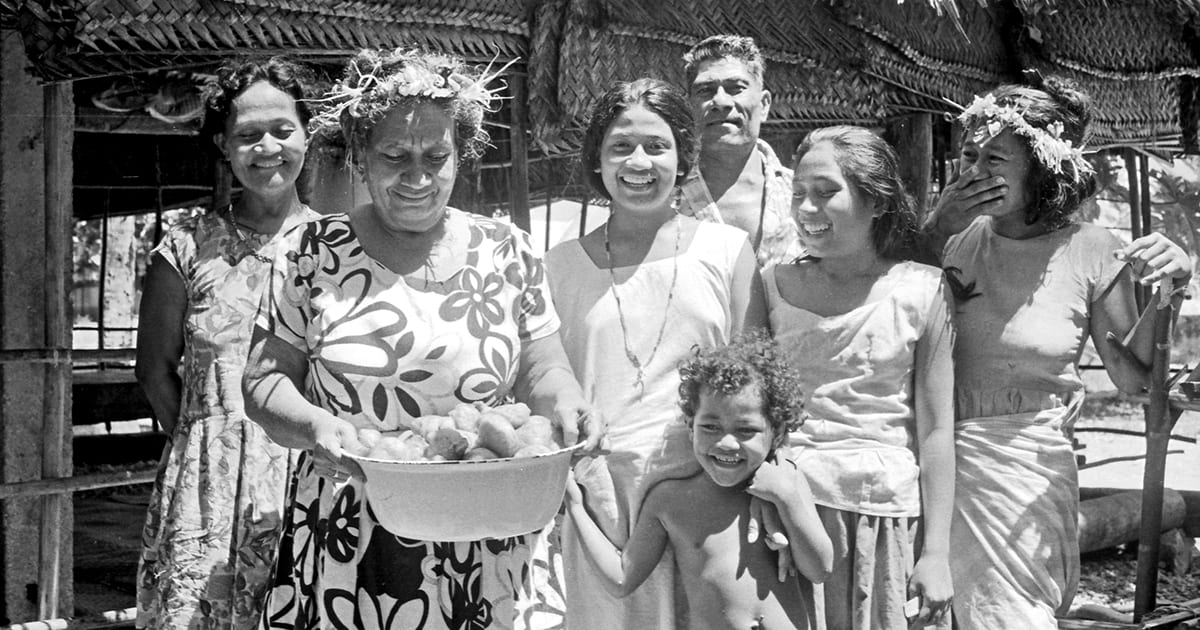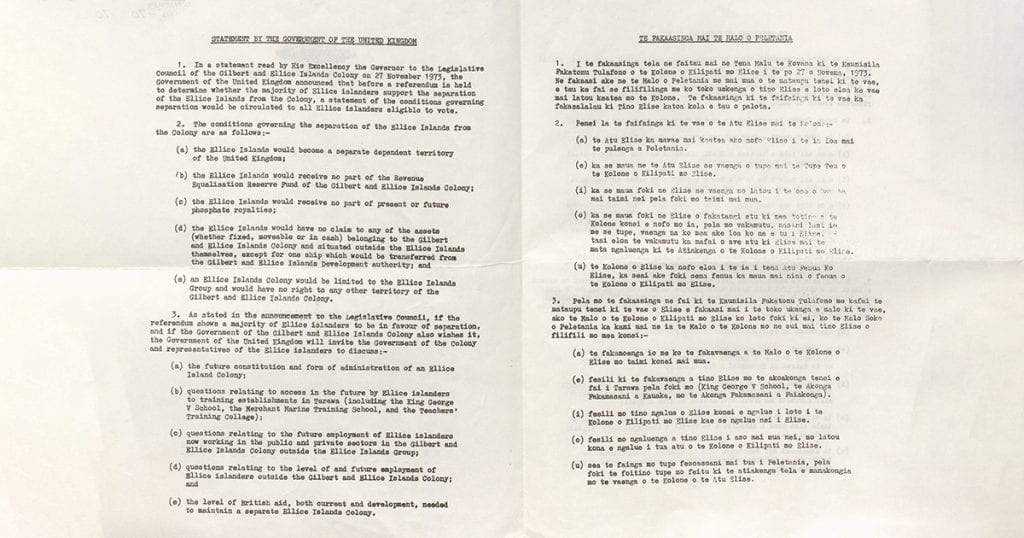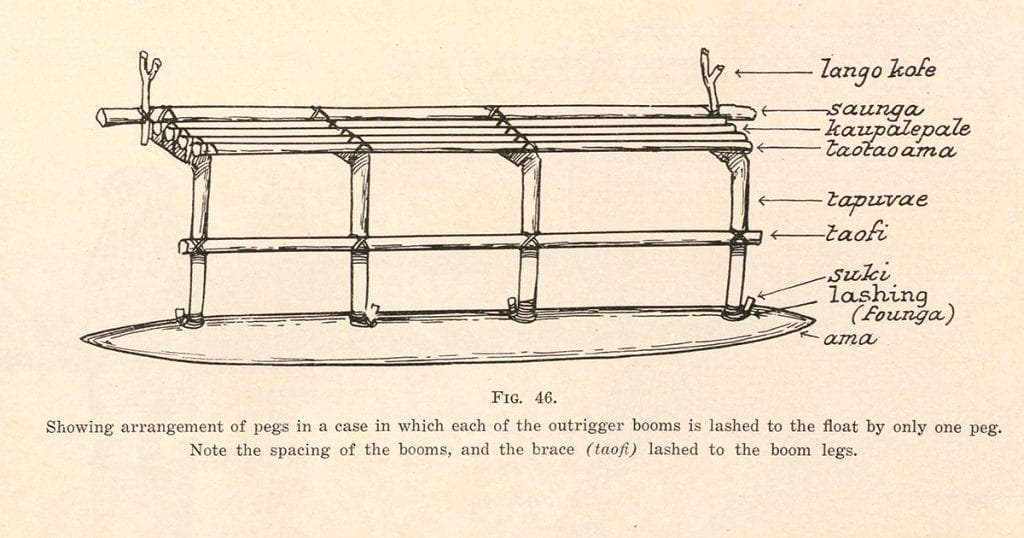Fakatalofa atu – welcome to Vaiaso o te ‘Gana Tuvalu -Tuvalu Language Week, which includes Tuvalu Independence Day on 1 October. This year’s theme is fakatumau kae fakaakoi tau ‘gana ke mautu a iloga o ‘ta tuā – preserve and embrace your language to safeguard our heritage identities.
The island nation of Tuvalu, located midway between Hawaii and Australia, is made up of nine coral islands spread over a vast area of ocean. The total land area of Tuvalu is only 26 km2 and its highest point just 4.6 metres above sea level, making its 11,000-plus inhabitants extremely vulnerable to rising sea levels.1
Te ‘gana a taatou ‘our language’
Te ‘Gana Tuvalu, the language of Tuvalu, is an Austronesian language often grouped by linguists into the Samoic Outlier subgroup of Polynesian languages. It is not unlike the language spoken in Tokelau, which lies about 1000 kms east of Tuvalu, suggesting the inhabitants of these two island groups originated from the same area and were in regular contact with each other in the distant past.2
Modern ‘Gana Tuvalu reflects the more recent history of the islands. The common use of many Samoan words is due to the influence of Samoan-trained missionaries, and the use of the Samoan Bible until 1977 when the New Testament was translated into ‘Gana Tuvalu. Tuvalu was part of the British Gilbert and Ellice Islands Colony (Kiribati and Tuvalu respectively) between 1916 and 1975 and administered from Tarawa in Kiribati. During this time various words and phrases in Gilbertese or te Taetae ni Kiribati, a Micronesian language, were adopted in Tuvalu. Te Taetae ni Kiribati is also the main language spoken on the Tuvalu atoll of Nui.3
The road to independence
Tuvalu gained full independence from Britain on 1 October 1978. An important part of the process, which began in the late 1940s, was a referendum in 1974 asking the people of the Ellice Islands if they would prefer to remain part of the Gilbert and Ellice Islands Colony or become a separate dependent British territory. On voting day, a resounding 93% of voters were in favour of separation. Cultural Collections (Special Collections) holds a copy of the referendum documents, including the ‘Conditions Governing Separation’ written in English, te ‘Gana Tuvalu and te Taetae ni Kiribati.5
Other examples of written ‘Gana Tuvalu held in Special Collections include in ethnographer and linguist Donald Kennedy’s field notes on the culture of the island of Vaitupu published in 1931. The richly illustrated book includes detailed descriptions of fishing, canoe and house building techniques and transcriptions of local songs and stories.7
Katherine Pawley, Cultural Collections
Discover more:
- View the display in the Special Collections Reading Room, Level G, General Library | Te Herenga Mātauranga Whānui until Monday 16 October.
- Search the Catalogue for some Tuvaluan language resources.
- Listen to two songs, ‘E aa Tuutuu Potu’ and ‘Te mako o Ualetense’, recorded in Nanumaga, Tuvalu, in September 1974. The songs were recorded by anthropologists Keith and Anne Chambers when they visited the island with UN officials overseeing the referendum. These recordings are from the Archive of Māori and Pacific Sound.
References
2Bresnier, N. (2000). Tuvaluan: A Polynesian Language of the Central Pacific, pages xxi -xxiv. Pacific Collection 499.52 B55tu.
3ibid.
4Great Britain. (1974). The Ellice Islands (referendum) order 1974. HMSO. NZ Pamphlets 93-70.
5ibid.
6Kennedy, D.G. (1931). Field notes on the culture of Vaitupu, Ellice Islands (1st ed.). Journal of the Polynesian Society, figure 46. NZ Glass Case 572.99681 K35.
7ibid.
Featured image: The household of Kanipule and Fosa, Nanumea, Tuvalu, 18 August 1973. (R to L) Mangao, Fosa, Lotomama, Kanipule, Vinasita, Seila, and Tiefini (in front). Photograph courtesy of Kiti (Keith Chambers) and Ane (Anne Chambers).



